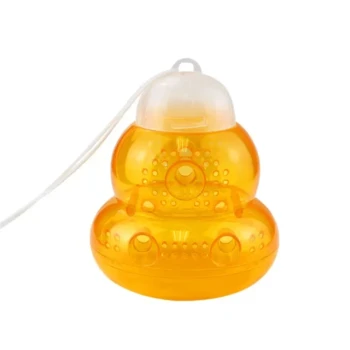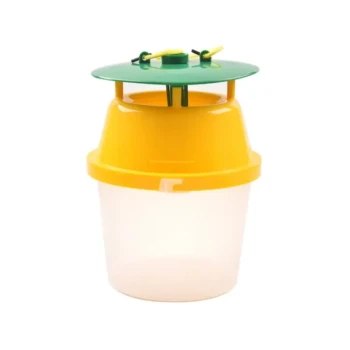Before the trial began, all bee colonies received a preventative treatment to guard against common diseases. They were given a drench of 1:1 sugar syrup that contained two key medications: 95 mg of fumagillin and 100 mg of oxytetracycline (OTC). This was done to ensure the colonies started the trial in a healthy, baseline state, free from preexisting infections.
The core principle behind pre-trial treatments is to create a controlled, uniform starting point. By proactively treating for common diseases and equalizing colony strength, researchers can be confident that any observed differences are due to the trial's variables, not pre-existing health issues or population imbalances.
The Purpose of Each Preventative Agent
To understand why these specific treatments were used, it's essential to look at the diseases they target. Each medication addresses a distinct and common threat to honey bee colony health.
Targeting Nosema with Fumagillin
Fumagillin is an antibiotic specifically used to control Nosema disease. This is a serious gut infection in adult honey bees caused by a microsporidian parasite.
By treating with fumagillin preventatively, researchers aimed to eliminate any underlying Nosema infections. This ensures the bees' digestive systems are healthy, allowing for normal nutrient absorption and preventing the stress and mortality associated with the disease.
Targeting Foulbrood with Oxytetracycline (OTC)
Oxytetracycline (OTC) is a broad-spectrum antibiotic used to prevent bacterial infections, most notably European Foulbrood (EFB).
EFB is a disease that affects young bee larvae, causing them to die before they can be capped. A preventative OTC treatment helps ensure the brood is healthy and that the colony's development isn't hindered by this bacterial threat.
The Importance of a Controlled Starting Point
The use of preventative treatments was just one part of a larger strategy to ensure the scientific validity of the trial. The goal was to remove as many confounding variables as possible before the experiment began.
Equalizing Colony Strength
Researchers took several steps to equalize the colonies. This meant ensuring each hive had a similar population size and resource level.
Specifically, each colony was standardized to contain:
- Three frames of brood
- One frame of honey and pollen
- One frame of drawn comb
This equalization prevents stronger colonies from having an inherent advantage, which could skew the trial results.
Ensuring Genetic Consistency
All colonies were headed by recently-mated queens from the same mother. This step minimizes genetic variation between the hives.
By using closely related queens, researchers can be more certain that differences in colony performance are related to the trial's conditions, not to inherent genetic traits like disease resistance or foraging vigor.
Understanding the Trade-offs
While preventative treatments are standard practice in many research settings, it's important to recognize the context.
Masking Underlying Issues
Prophylactic (preventative) antibiotic use can sometimes mask underlying issues or suppress a colony's natural immune responses. In a commercial beekeeping operation, continuous treatment is not always a sustainable strategy.
The Goal of Research vs. Management
For a scientific trial, the primary goal is data integrity. Eliminating disease as a variable is critical. In a commercial or hobbyist setting, the goal is long-term colony health, which often involves integrated pest management and selective breeding for disease resistance rather than routine medication.
How This Applies to Your Understanding
The pre-trial preparations highlight the rigorous standards required for reliable scientific research with honey bees.
- If your primary focus is research: Proactively treating for disease and equalizing colonies is a necessary step to isolate the variable you are testing.
- If your primary focus is beekeeping management: These treatments demonstrate the importance of addressing Nosema and EFB, but routine preventative use should be weighed against the goals of promoting natural colony resilience and avoiding antibiotic resistance.
Ultimately, these measures were implemented to ensure that the results of the trial would be scientifically sound and trustworthy.
Summary Table:
| Preventative Treatment | Purpose | Target Disease |
|---|---|---|
| Fumagillin (95 mg) | Control gut infection in adult bees | Nosema Disease |
| Oxytetracycline (100 mg) | Prevent bacterial infection in larvae | European Foulbrood (EFB) |
Ensure your apiary's health starts with the right equipment and supplies.
HONESTBEE supplies commercial apiaries and beekeeping equipment distributors with the high-quality, wholesale-focused gear needed to maintain strong, productive colonies. From feeders for administering treatments to essential hive components, we provide the reliable foundation for successful beekeeping.
Contact our team today to discuss your wholesale needs and how we can support your operation's health and growth.
Related Products
- Wooden Bee Brush with Double-Row Horsehair Bristles
- Premium Traditional Copper Bee Smoker with Bellows
- HONESTBEE 3-Frame Manual Acrylic Honey Extractor
- Wooden Bee Brush with Triple Row Artificial Fiber for Beekeeping
- Professional Bamboo Queen Isolation Cage
People Also Ask
- What are the characteristics of a bee brush's bristles and handle? Gentle Tools for Healthy Hives
- What are the characteristics of the bristles on a bee brush? Designed for Gentle Persuasion, Not Force
- What handling tools are essential for beekeepers during honey harvest? Streamline Your Harvest with the Right Equipment
- What is a bee brush and what is its primary use? A Gentle Tool for Hive Management
- What are the key features of a popular bee brush? Essential Design for Bee Safety and Hive Hygiene



















